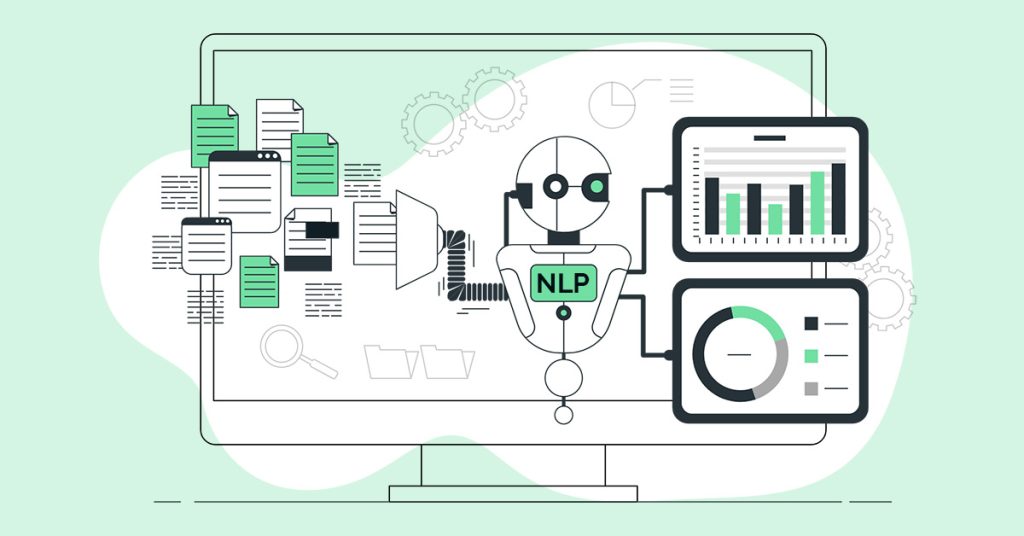Fraud Fighters in the Digital Age :
The Ever-Present Threat
Our world is digital & with this shift comes a growing vulnerability to fraud. Online transactions are the backbone of modern commerce. It creates opportunities for criminals to exploit weaknesses in security systems. Fraud detection becomes a critical line of defense for businesses and individuals alike. By proactively identifying and preventing fraudulent activity, we can safeguard financial resources. Thus, maintain trust in the digital marketplace.
Enter the AI Chatbot
Traditional methods of fraud detection have served us well. The evolving tactics of fraudsters demand ever-more sophisticated solutions. This is where Artificial Intelligence (AI) chatbots enter the scene. These intelligent programs can be powerful tools in the fight against fraud. It offers unique capabilities that can enhance existing detection methods.
Understanding Fraud Detection :
What is Fraud Detection ?
Fraud detection is the process of identifying and preventing unauthorized or illegal activity . This activity aims to gain a financial advantage. It involves analyzing transactions, customer behavior, and other data points. Thus, it helps in uncovering patterns or anomalies indicative of fraud.
Why is it Important for Businesses ?
For businesses, robust fraud detection is essential for several reasons :
Protects Financial Resources : Fraudulent transactions can lead to significant financial losses. By detecting and preventing fraud, businesses can safeguard their profits & ensure financial stability.
Maintains Customer Trust : Experiencing fraud can be a frustrating & damaging experience for customers. Effective fraud detection builds trust and confidence in a business’s security measures. Thus, encouraging repeat customers and positive word-of-mouth.
Improves Operational Efficiency : Fraudulent activity can disrupt daily operations & divert resources away from legitimate business activities. Strong fraud detection helps streamline processes & allows businesses to focus on core functions.
The Many Faces of Fraud
Fraud comes in various forms, each with its own impact on organizations. Here are some common types :
Payment Fraud : This involves the unauthorized use of credit cards, debit cards, or other payment methods.
Identity Theft : Fraudsters steal personal information. It can make unauthorized purchases, open new accounts, or access existing ones.
Account Takeover : Criminals gain access to existing accounts. Like bank accounts or email accounts, to steal funds or conduct other fraudulent activities.
Refunds Fraud : Fraudulent returns or requests for refunds on purchases that were never made.
The impact of these fraudulent activities can be far-reaching. Thus, causing financial losses, reputational damage and operational disruptions.
Challenges of Traditional Methods :
While traditional fraud detection methods like rule-based systems have played a role, they face limitations :
Static Rules : Fraudsters constantly adapt their tactics. The static rules may not be able to identify new or evolving schemes.
False Positives : Traditional systems can generate false alarms, wasting resources and frustrating legitimate customers.
Limited Data Analysis : These methods may not be able to analyze the vast amount of data now available for fraud detection. Thus, leading to missed opportunities.

The Role of AI Chatbots in Fraud Detection :
Beyond Basic Interactions
AI chatbots are no longer just customer service tools. They are evolving into powerful security assets with the potential to revolutionize fraud detection. These chatbots can analyse information & learn from past experiences. It can adapt to new threats, offering significant advantages over traditional methods.
Detection Prowess
AI chatbots excel in several areas of fraud detection :
Real-Time Analysis : Chatbots can interact with users in real-time & analyze their language patterns. It can also respond to security questions, and overall behavior. Deviations from established baselines can trigger alerts for potential fraud.
Data Powerhouse : AI chatbots can be integrated with various data sources. It includes transaction history, customer profiles, and external threat intelligence. This comprehensive data analysis helps identify complex fraud patterns that might escape traditional methods.
Adaptive Learning : AI chatbots continuously learn and improve with each interaction. They can adapt to new fraud tactics over time. Thus, ensuring that they remain effective against evolving threats.
Advantages Over Traditional Methods :
AI chatbots offer several advantages compared to traditional fraud detection techniques :
Reduced False Positives : AI chatbots can analyze a wider range of data points. Thus, leading to more accurate identification of fraud and fewer false alarms.
Enhanced Customer Experience : Chatbots can provide a seamless & personalized experience during fraud investigations. Thus, minimizing disruption for legitimate customers.
24/7 Vigilance : Unlike human analysts, AI chatbots can monitor activity around the clock. It provides continuous protection against fraud attempts.
Inside the AI Chatbot : Key Features for Fraud Detection
AI chatbots for fraud detection leverage a combination of powerful technologies to identify suspicious activity. Here’s a breakdown of the key features :
The Power of Words : Natural Language Processing (NLP)
- NLP allows the chatbot to understand the intent and meaning behind user text input.
- It can analyze factors like word choice, sentence structure, and even sentiments. It helps in identifying inconsistencies that might indicate fraud.
- For example, the chatbot can compare a user’s language patterns during a high-value transaction with their historical interactions. It helps to detect potential impersonation.
Learning from Experience : Machine Learning Algorithms
- Machine learning algorithms are at the core of the chatbot’s ability to detect fraud.
- These algorithms are trained on historical data sets containing fraudulent and legitimate transactions.
- By analyzing vast amounts of data, the algorithms can identify patterns and anomalies that might be indicative of fraud.
- Over time, the chatbot continuously learns & improves its ability. It helps in detecting new & evolving fraud tactics.
Real-Time Vigilance : Monitoring and Alerting
- AI chatbots can monitor user interactions in real-time.
- They can analyze responses to security questions, typing patterns, and even voice biometrics (if enabled). It helps in detecting deviations from established baselines.
- If suspicious activity is detected, the chatbot can trigger real-time alerts for human investigation & immediate action.
Tailored to the Task : Customizable Rule-Based Systems
- While AI and machine learning are powerful tools, there’s still room for customization.
- You can define specific rules within the chatbot to address known fraud scenarios.
- For instance, a rule can be set to flag transactions originating from unusual locations or exceeding pre-defined spending limits.
Why Focus on Prevention ?
Proactive Protection : Prevention aims to stop fraud before it happens. It minimizes financial losses and operational disruptions. Detecting fraud after the fact can only recover what’s lost. But prevention safeguards resources in the first place.
Enhanced Customer Trust : Customers value security. When they feel their information & finances are protected, they’re more likely to trust & do business with you.
Reduced Recovery Costs : Investigating and resolving fraudulent transactions is time-consuming and expensive. Prevention helps avoid these costs and allows businesses to focus on core activities.
Deterring Fraudsters : A strong prevention system discourages criminals from targeting you. They know the chances of getting caught are high, making them less likely to attempt fraud.
Improved Efficiency : By preventing fraud, businesses can streamline operations. They won’t need to dedicate as many resources to dealing with fraud-related issues.
Optimizing AI Chatbot Fraud Fighter : Best Practices
AI chatbots hold immense potential for fraud detection. But their effectiveness hinges on continuous improvement. Here are key best practices to maximize their impact :
- Never Stop Learning : Continuous Training and Refinement
Fresh Data, Fresh Insights : AI models are only as good as the data they’re trained on. Regularly feed your models with new data. It includes successful fraud attempts and evolving customer behavior patterns. This ensures the chatbot stays updated on the latest fraud tactics.
Refine and Repeat : Continuously monitor and refine your AI models. Analyze their performance, identify areas for improvement, and retrain the models with adjustments. This iterative process helps them become more accurate and adaptable over time.
- A Team Effort : Collaboration is Key
Data Masters and Fraud Fighters : Foster collaboration between data scientists, fraud analysts & chatbot developers. Data scientists provide the technical expertise, fraud analysts offer real-world fraud insights. While chatbot developers translate this knowledge into chatbot functionalities. This combined expertise optimizes fraud detection capabilities.
User Experience Champions : Include user experience (UX) specialists in the development process. They can ensure the chatbot interactions are clear, concise & not overly disruptive to the user experience.
- Regular Checkups : Audits and Performance Evaluations
Penetration Testing : Conduct regular penetration testing to simulate real-world fraud attempts. This helps identify weaknesses in the chatbot’s detection system. Thus, allowing for timely patching of vulnerabilities.
Performance Metrics : Establish key performance indicators (KPIs) to track the chatbot’s effectiveness. These metrics could include fraud detection rate, false positive rate and user satisfaction. Regularly evaluate these metrics to identify areas for improvement.
- Learning from Experience : Leverage Feedback Loops
User Feedback : Implement mechanisms to collect user feedback on their interactions with the chatbot. This feedback can be invaluable in identifying areas for improvement in the chatbot’s communication style, question clarity & overall user experience.
Data-Driven Insights : Analyze chatbot interaction data to identify patterns and trends. This data can reveal potential weaknesses in the detection process or areas where the chatbot can be more efficient. Use these insights to refine the chatbot’s workflows and conversation flows.
Using Botbuz AI Chatbot in Fraud detection :
Fraud is a constant threat. But you don’t have to face it alone. By leveraging the power of Botbuz AI chatbots, you can gain a powerful ally in the fight against fraud.
Botbuz AI chatbots go beyond simple customer service interactions. They are intelligent fraud detection tools that can analyze vast amounts of data. It can even understand user behavior, and identify anomalies in real-time. This allows you to catch fraud attempts before they occur. Thus, minimizing financial losses and protecting your customers.
However, Botbuz AI chatbots are not a silver bullet. Their effectiveness thrives on continuous learning and improvement. By following the best practices outlined above, you can ensure your Botbuz AI chatbot stays sharp, adaptable, and a formidable foe to fraudsters.
Remember, fraud prevention is a collaborative effort. Combine Botbuz AI chatbots with strong data security practices & user education. Also collaborate with other fraud detection methods. With this comprehensive approach, you can create a robust defense system that safeguards your organization. Thus, fosters trust with your customers.
Embrace the future of fraud detection. Let Botbuz AI chatbots be your intelligent partner in building a safer digital environment.




